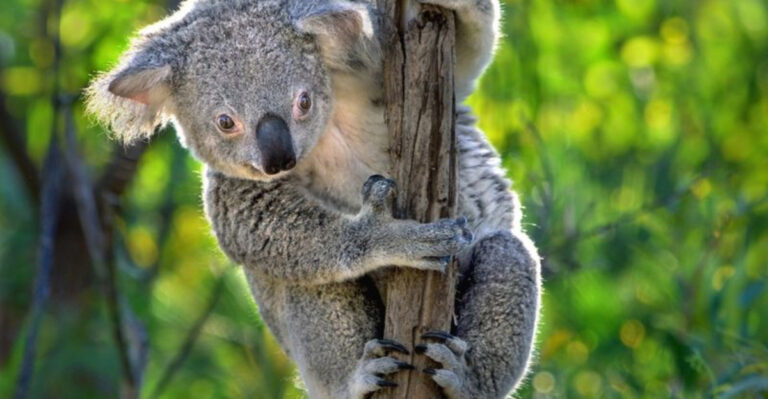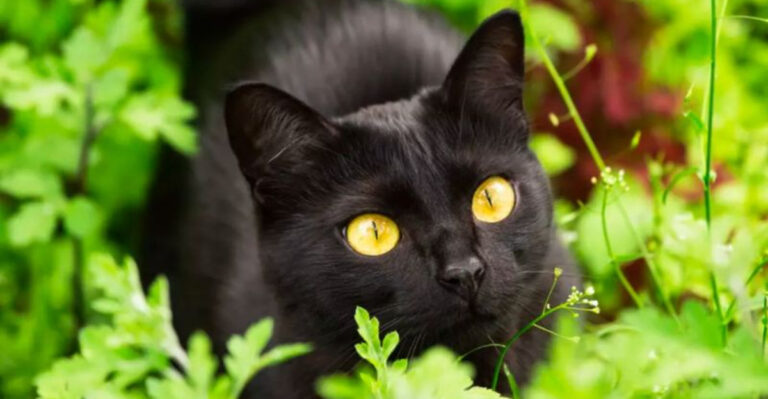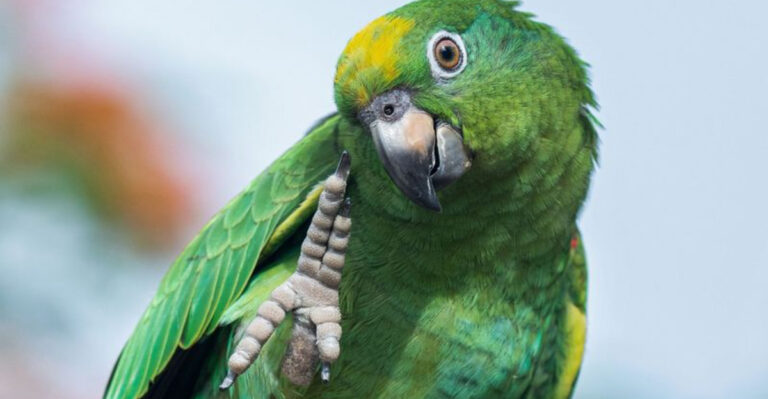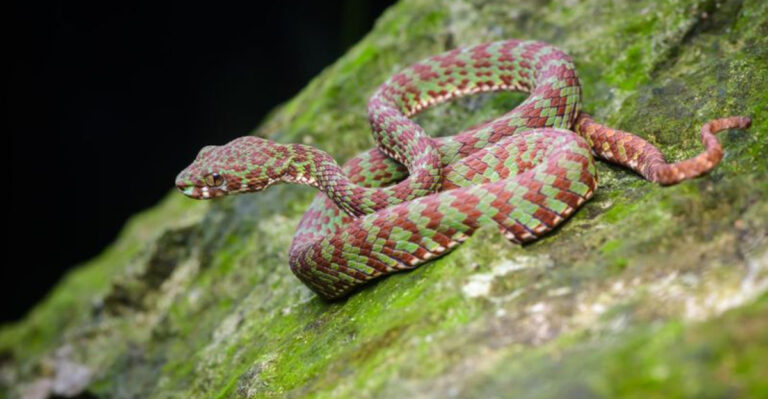17 States Where You’re Most Likely To Encounter Copperhead Snakes
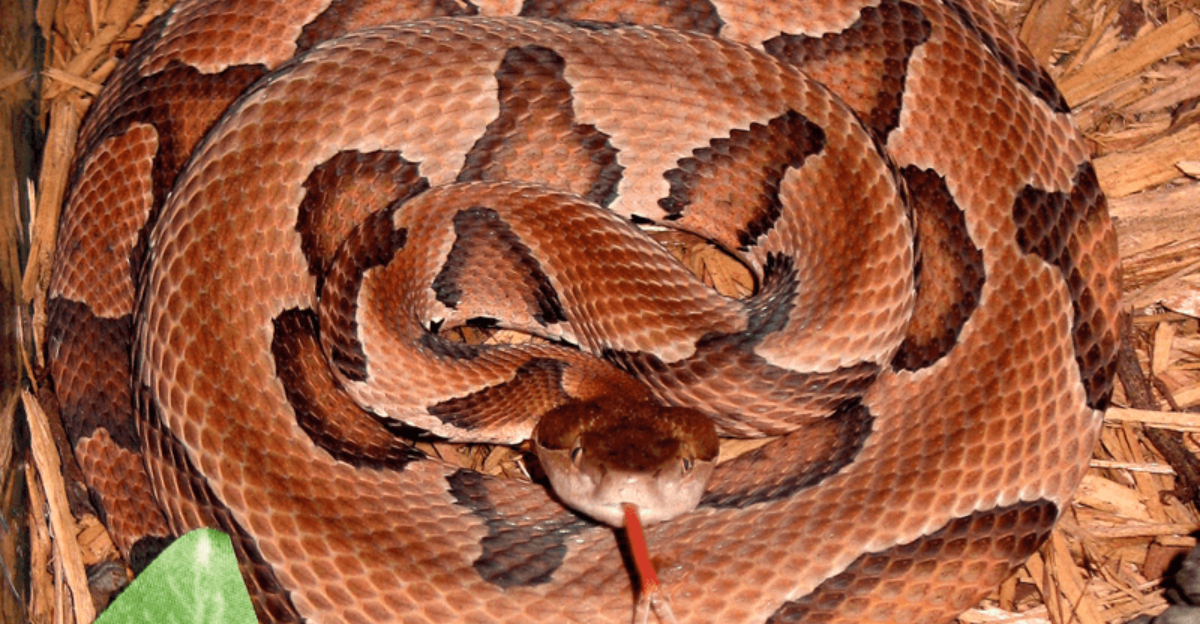
Copperhead snakes, with their distinct copper-hued heads, are a common sight in various parts of the United States.
Known for their relatively mild venom, they’re fascinating creatures deserving respect and caution. T
his list explores states where these serpents are more frequently spotted. Each state offers unique terrains, attracting these elusive reptiles.
1. Missouri
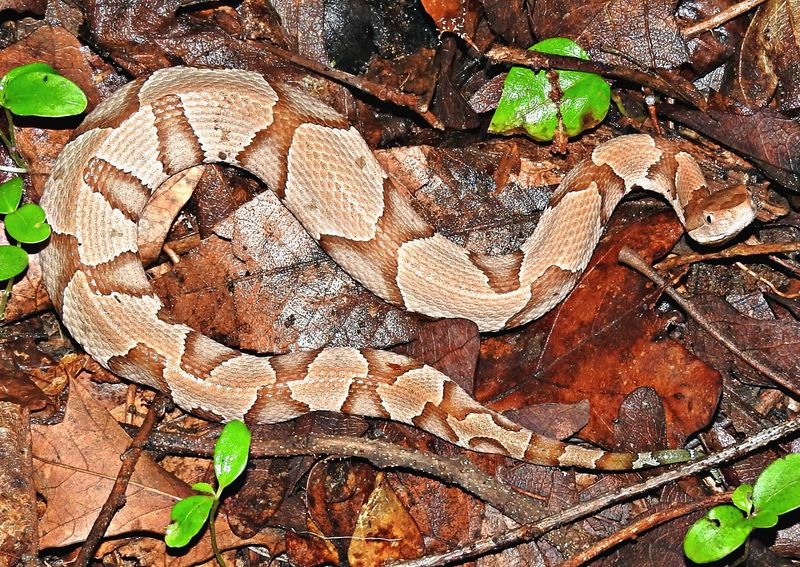
In Missouri, the terrain offers an irresistible invitation to copperhead snakes. This state, with its dense forests and rocky hills, provides the ideal habitat for these creatures.
Copperheads here enjoy basking in sunny patches. Moving through the underbrush, they use their camouflage to full effect.
Safety tip: Watch your step while hiking, especially in the Mark Twain National Forest. Encountering a copperhead in Missouri is a reminder of nature’s beauty and the importance of treading carefully.
They’re more active in the warmer months.
2. Virginia
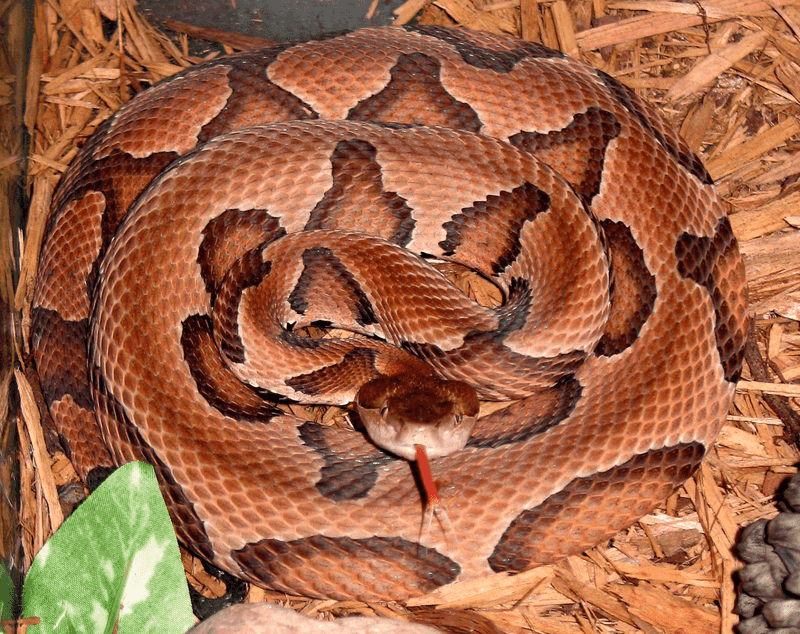
Virginia’s charm isn’t complete without a mention of its copperhead population.
These snakes find the state’s woodlands perfect for their lifestyle. Along the Appalachian Trail, hikers may occasionally spot one of these snakes. Their preference for hiding under leaf litter makes them tricky to spot.
Staying on marked paths and being observant reduces unexpected encounters.
Virginia’s copperheads are a testament to the state’s vibrant wildlife diversity. Always keep an eye out, especially in the Shenandoah Valley.
3. South Carolina
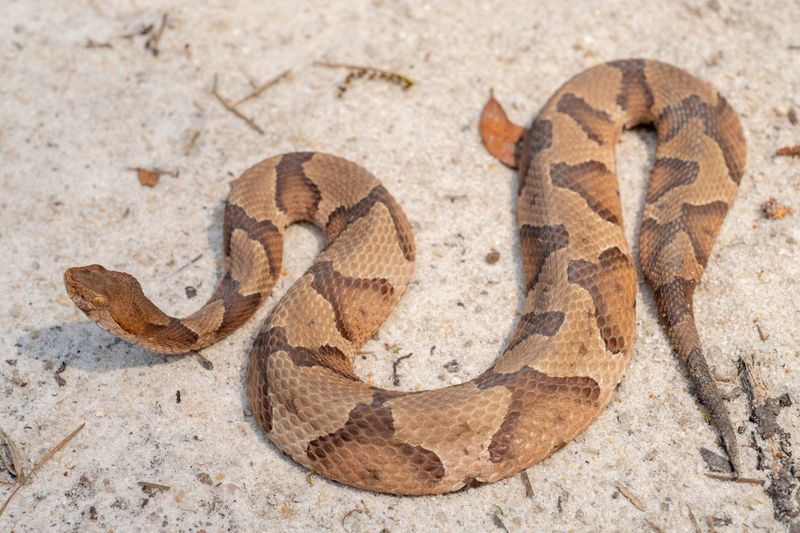
South Carolina’s swamps and wetlands are prime real estate for copperheads.
Their striking color blends seamlessly with the earthy tones of the region. Whether near a quiet swamp or amidst Spanish moss, these snakes are stealthy residents. Visitors should be cautious around water bodies.
Copperheads here are particularly fond of cooler evenings. A nighttime stroll might just bring you face-to-face with one.
Always carry a flashlight and wear sturdy shoes while exploring the wilds of South Carolina.
4. Texas
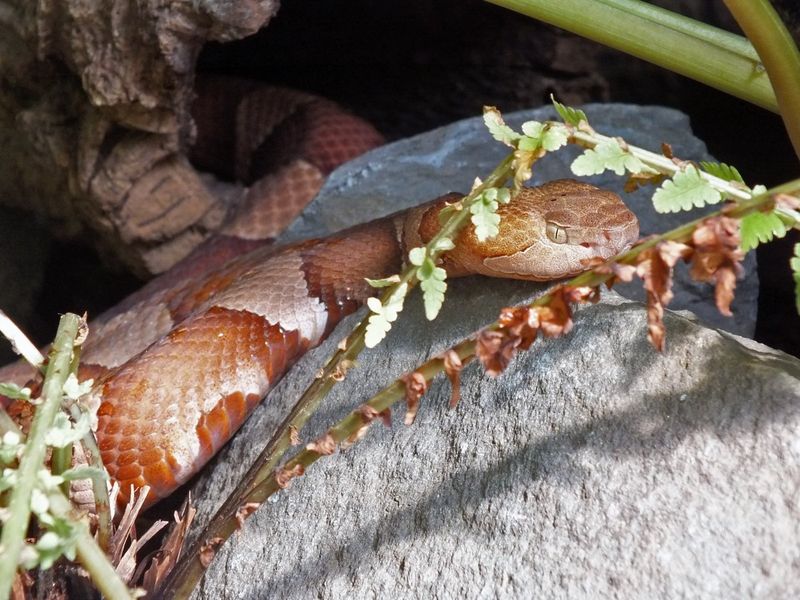
In the vast state of Texas, copperheads find a comfortable home. From lush forests to arid plains, they adapt with ease.
Particularly in the eastern part of the state, they thrive. With the iconic Texas bluebonnets painting the landscape, copperheads add their copper splash.
It’s wise to be vigilant when wandering through fields or forests. Texas residents know well to watch their steps. Copperheads are generally not aggressive but appreciate their space respected.
5. Georgia
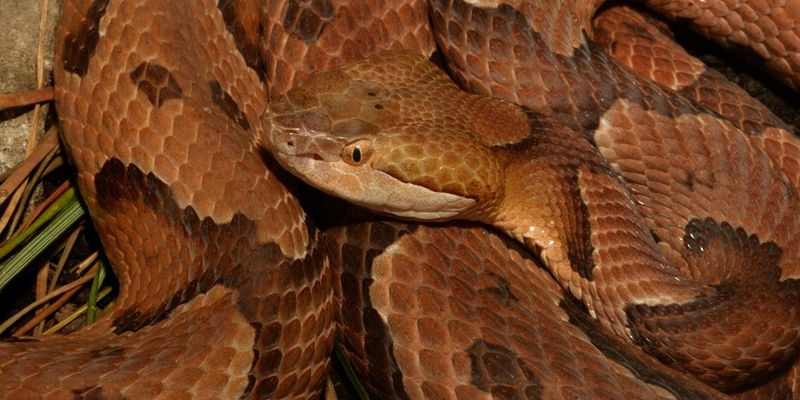
Georgia, with its rich biodiversity, is a haven for copperhead snakes. They weave through the state’s forests, blending in with the leaf litter.
The Piedmont region is a favorite haunt. Hikers should tread carefully and respect these reptiles’ personal space.
Copperheads are masters of disguise, often unseen until they move. Shuffling leaves with a stick before stepping can avoid surprises.
In Georgia, copperheads are a cherished part of the natural tapestry, coexisting in harmony with humans.
6. Indiana
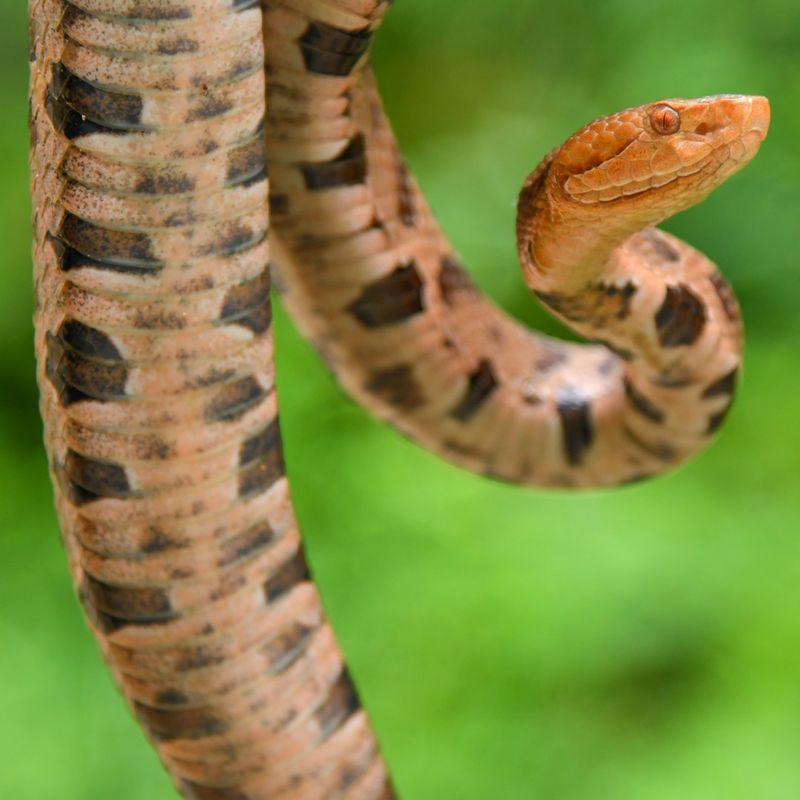
Indiana’s woodlands whisper the presence of copperhead snakes. These serpents are fond of the state’s rocky outcrops and warm, humid afternoons.
They often stay out of sight, coming out in cooler twilight hours. If you enjoy rock climbing or hiking, check your surroundings before settling down. Copperheads in Indiana are peaceful if left undisturbed.
Their preference for rocky shelters means they’re best left alone. Indiana celebrates its natural beauty with these elusive residents as part of the landscape.
7. Oklahoma
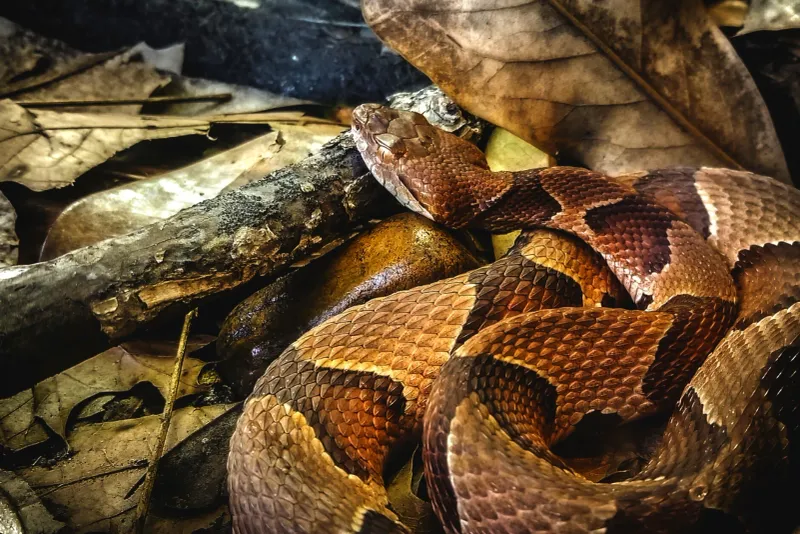
Oklahoma offers copperheads a unique abode with its red earth and diverse habitats. From prairies to woodlands, these snakes call Oklahoma home.
They’re often seen basking on rocks or crossing trails. Their copper hue is a striking match with the red soil. Hikers need to be aware of their surroundings, especially in state parks or reserves.
Copperheads in Oklahoma are an integral part of the ecosystem, thriving in the state’s varied landscapes. They remind us to walk gently on earth.
8. North Carolina
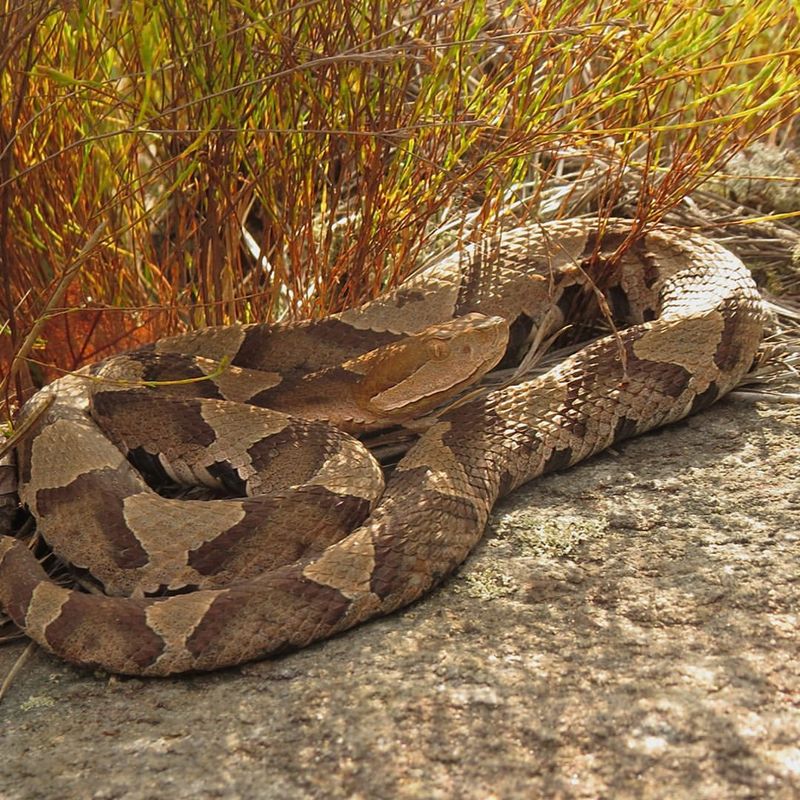
Copperheads in North Carolina are as much a part of the forest as the trees themselves. The state’s waterfalls and lush greenery provide the perfect backdrop for these snakes.
Often seen near water sources, they enjoy sunbathing on rocks. North Carolina’s residents know to be cautious, especially during the warmer months.
A careful observer will appreciate their beauty without risking a close encounter. These snakes are an emblem of North Carolina’s rich and varied wildlife. Respect and admire them from a distance.
9. Alabama
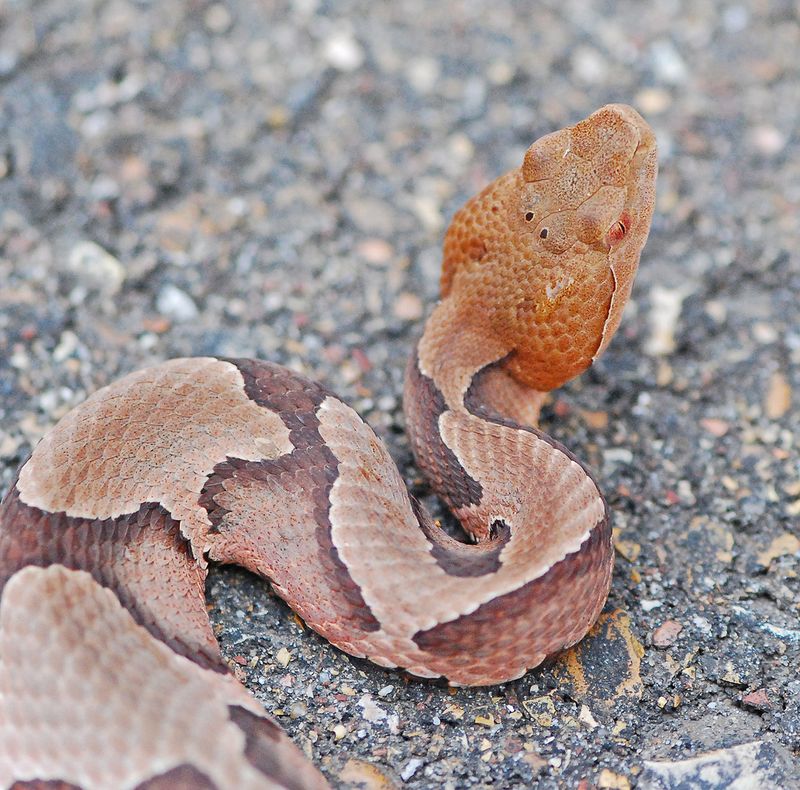
Alabama’s warm climate suits copperhead snakes perfectly. They glide silently through the state’s forests, especially fond of the autumn months.
With the falling leaves, they blend almost effortlessly. Nature enthusiasts are advised to maintain vigilance when traversing leaf-strewn paths.
Copperheads in Alabama are more than just residents; they’re part of the natural balance. Encountering one is a reminder of nature’s intricate design.
They are best appreciated from afar, allowing them their space and tranquility.
10. Tennessee
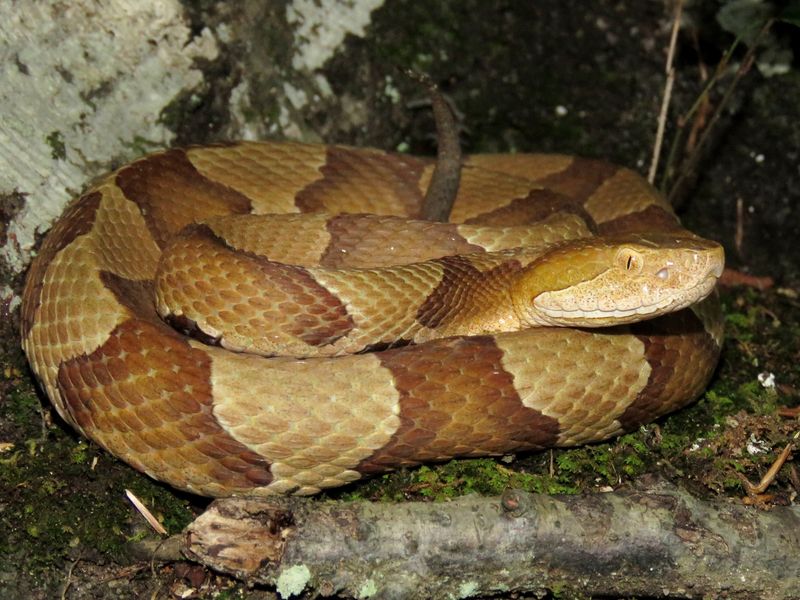
In Tennessee, the Great Smoky Mountains are a copperhead’s playground. These snakes favor rocky landscapes and wooded areas.
They’re known to bask on warm stones during sunny days. Hikers in the Smokies often share trails with these silent slitherers. Keeping a respectful distance ensures a peaceful coexistence.
Copperheads in Tennessee add to the mystique of the Smoky Mountains. Always stay alert when exploring, especially in the shaded rocky areas. Appreciate them as part of the natural splendor.
11. Kentucky
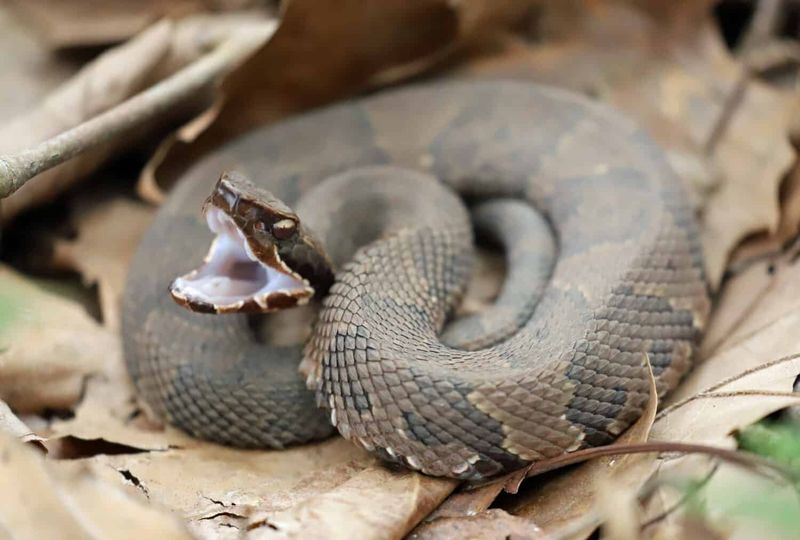
Kentucky’s rolling hills and bluegrass fields are more than just scenic views. They’re also home to the copperhead snakes.
These serpents enjoy the varying terrain, often seen in fields and forest edges. Their presence is a gentle reminder of the wild beauty of the state.
Visitors and locals alike should be cautious when enjoying the outdoors. Kentucky’s copperheads blend into the landscape, requiring keen eyes to spot. They contribute to the state’s rich biodiversity and natural charm.
12. Illinois
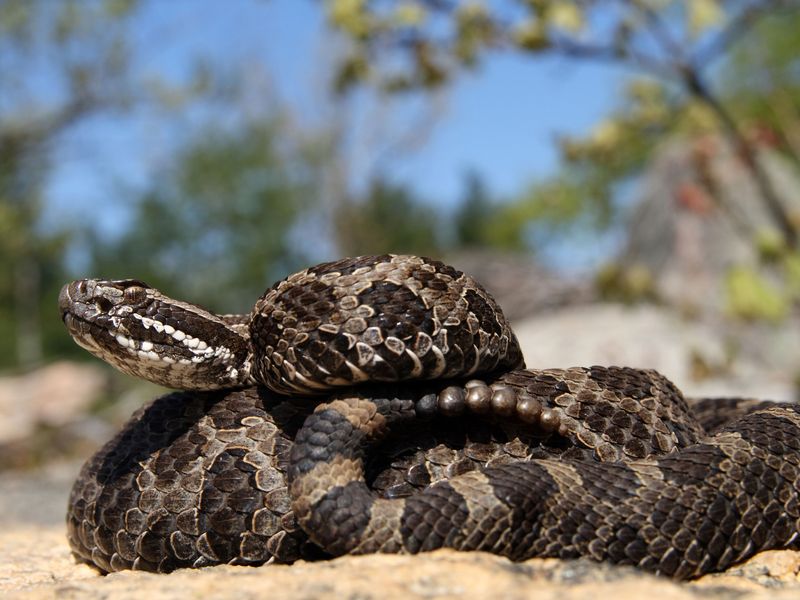
In Illinois, copperhead snakes find the forest floors inviting. They’re partial to the state’s warm, wooded areas. The leaf litter provides perfect camouflage for these snakes.
When exploring Illinois’ natural parks, it’s wise to stay on paths. Copperheads prefer their own company, so they’re unlikely to bother passersby.
These creatures add a touch of mystery to Illinois’ forests. Their presence is a reminder of the hidden wonders waiting to be discovered. The key is to observe without disturbing.
13. Louisiana
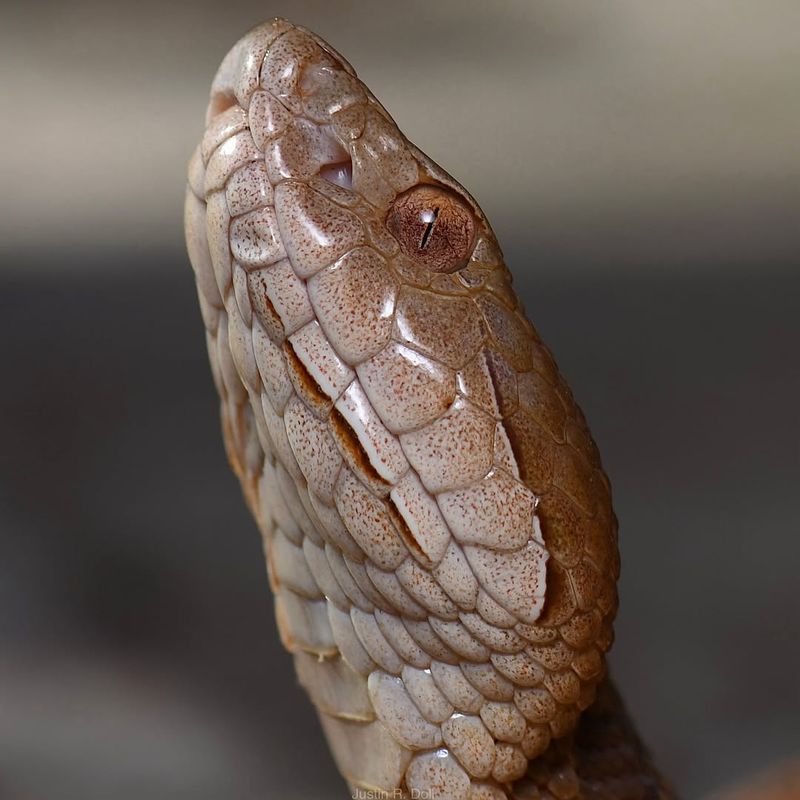
Louisiana’s bayous offer a picturesque backdrop for copperhead snakes. These serpents thrive amidst the cypress trees and murky waters.
They’re often seen on the banks, soaking up the sun. Visitors should be mindful when near the water’s edge. Copperheads in Louisiana are an integral part of the swamp ecosystem.
Their existence highlights the rich biodiversity of the bayous. Encountering one is a glimpse into the wild heart of Louisiana. Respecting their space ensures a safe and enriching experience.
14. Mississippi
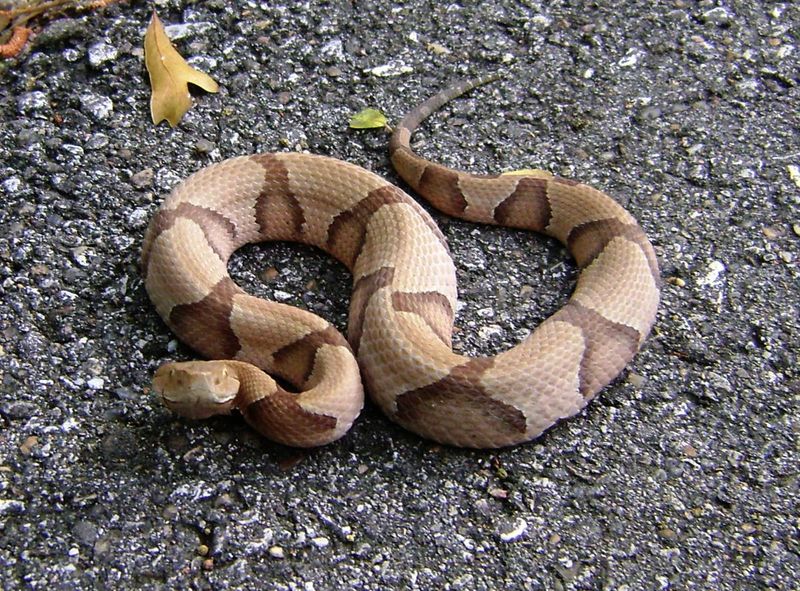
Mississippi’s dense woodlands provide a sanctuary for copperhead snakes. They thrive in the state’s warm and humid climate. Often seen resting on logs or hidden in foliage, these snakes are elusive.
Forest wanderers should tread carefully and watch for movement. Copperheads in Mississippi play a vital role in the ecosystem. They control pest populations, showcasing nature’s balance.
Observing them requires patience and respect. Their quiet presence is a testament to Mississippi’s vibrant natural life. Let them remind us of nature’s quiet mysteries.
15. Arkansas
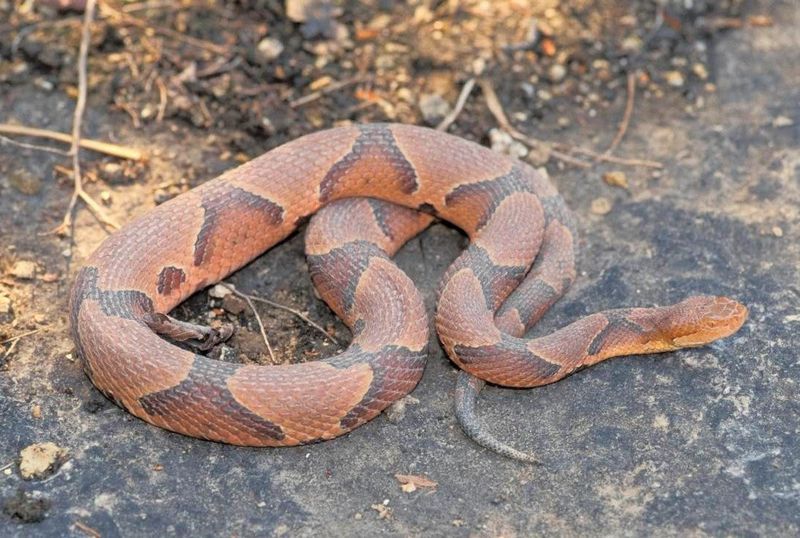
Arkansas, with its Ozark Mountains, is a copperhead haven. These snakes are fond of the rocky ledges and wooded valleys. They bask in the sun, blending with the rugged terrain.
Hikers and explorers should be aware of their surroundings. Arkansas copperheads are generally shy, preferring solitude. Their presence adds to the state’s natural allure. When in the Ozarks, appreciating from a distance is key.
Copperheads are a testament to Arkansas’ wild beauty, adding a copper sheen to the landscape.
16. New York
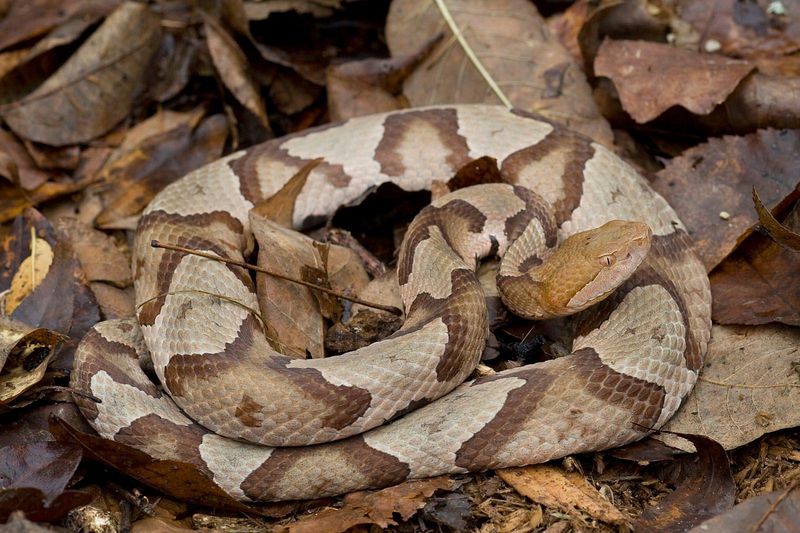
New York might surprise some with its copperhead population. In the Hudson Valley, these snakes make their home.
They enjoy the rocky terrain and forested areas here. While uncommon in the city, they remind us of New York’s wild side. Hikers should be vigilant, especially in the warmer months.
Copperheads in New York are a blend of the unexpected and the natural. They enhance the Hudson Valley’s scenic beauty. Their presence is a gentle reminder to respect all creatures, big and small.
17. Pennsylvania
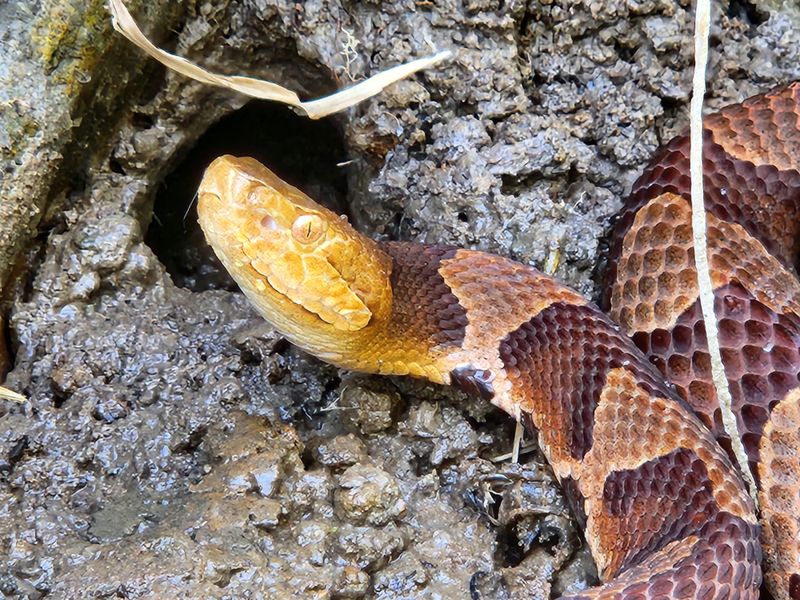
Pennsylvania’s Appalachian Mountains offer copperheads a perfect retreat. These snakes thrive in the rocky and forested regions.
Their camouflage is impressive, making them hard to spot. Outdoor enthusiasts should be cautious on trails. Copperheads in Pennsylvania contribute to the state’s rich natural tapestry.
Their presence is a fascinating glimpse into the Appalachian ecosystem. Observing them is a privilege that requires respect and caution.
They’re an integral part of nature’s symphony, adding to Pennsylvania’s wild charm.


